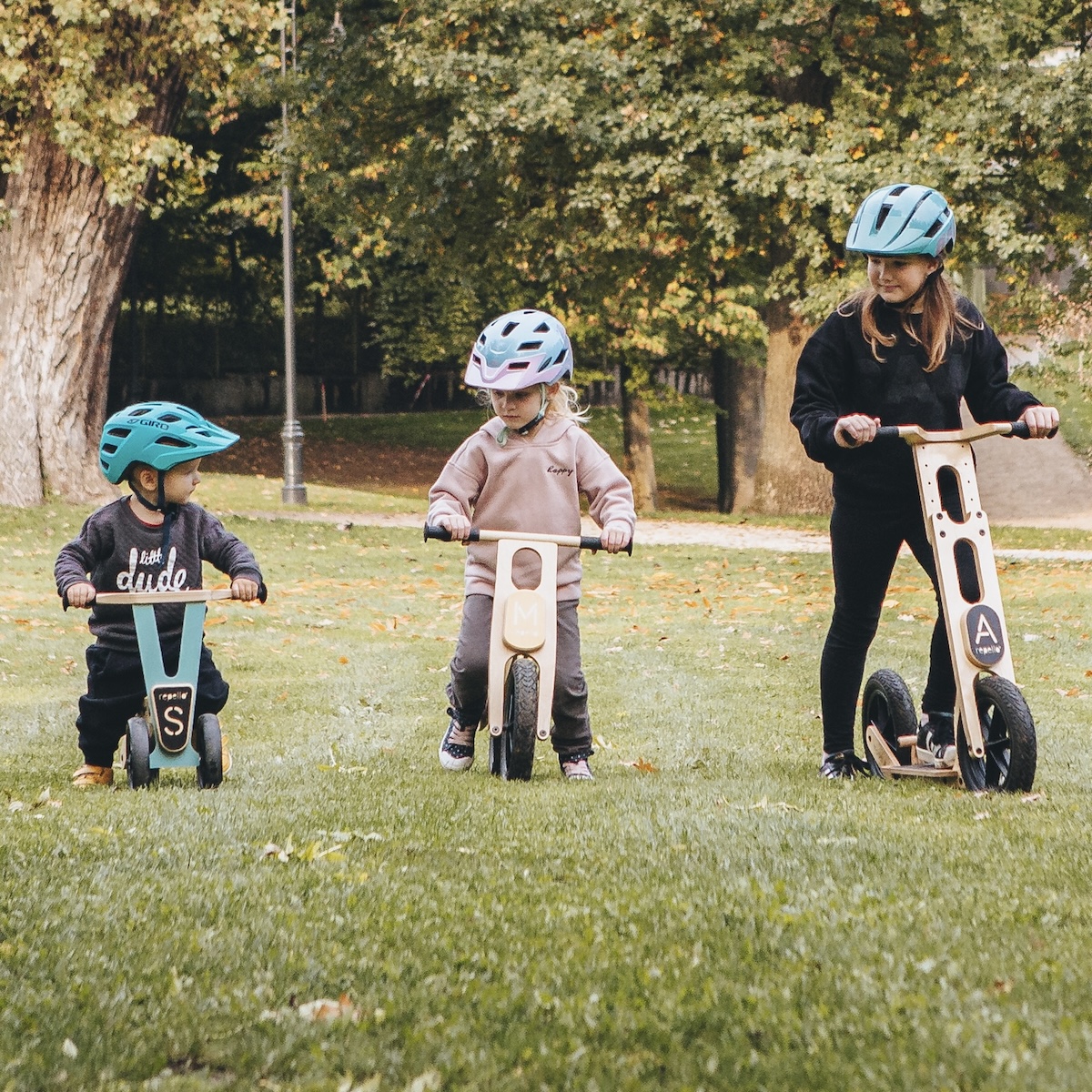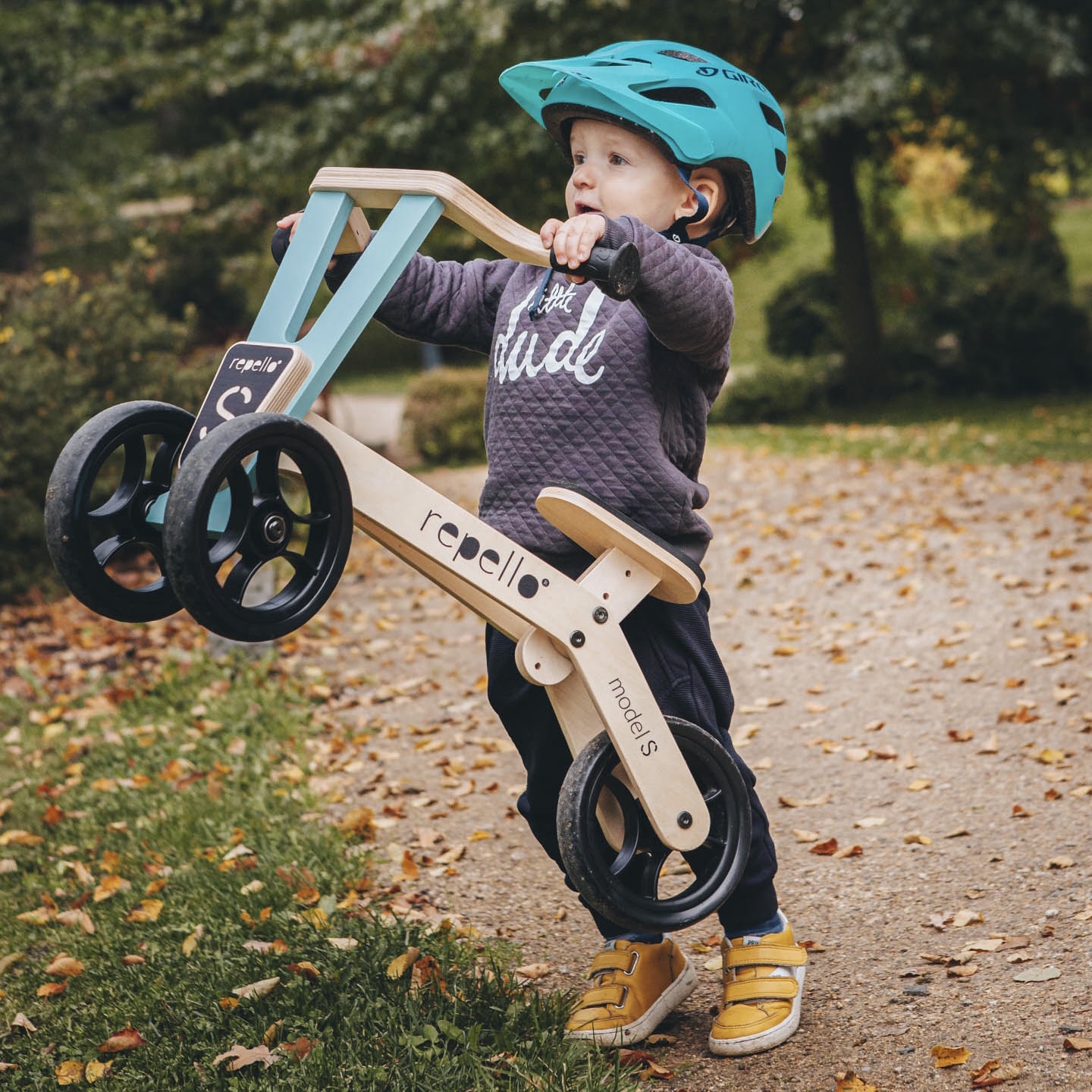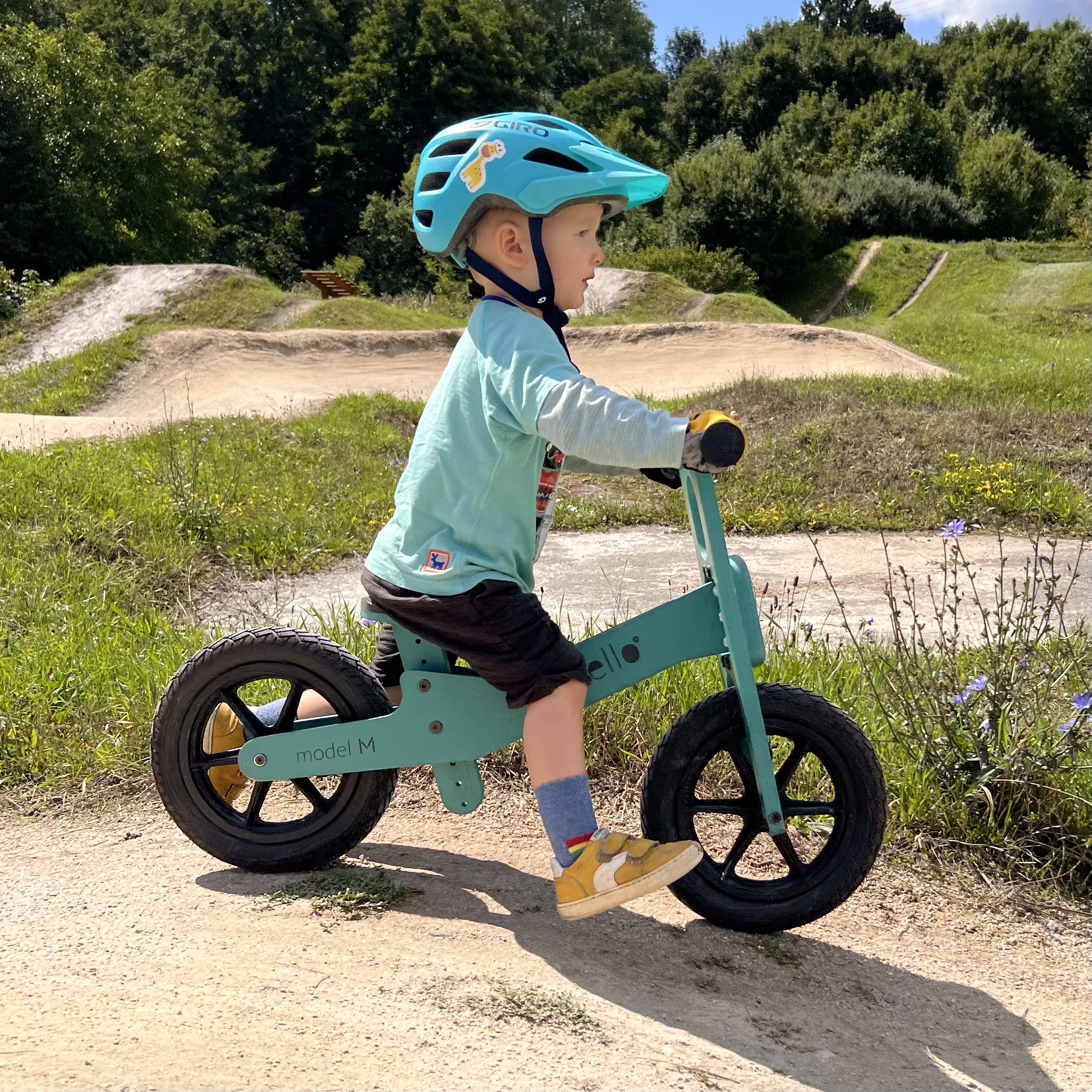4+1 tips to find the perfect balance bike for your child

Kids motorcycles, bikes, balance bikes. With so many options, how do you choose a balance bike that won't end up in the basement? At RePellu, we know. Since 2015, we've been gathering knowledge, researching the ergonomics of toys, and developing our own. Now we're sharing our experience with you.
The ideal balance bike should be safe, comfortable, and visually appealing. Key factors to consider when choosing one are: size, weight, ergonomics, and tire quality.
Proper size according to child's height
Always look for a child's height range when choosing a balance bike. Don't just rely on the age range. We provide both pieces of information for each model. For example, Model M is suitable for children aged 2 to 5 years, but the decisive factor is the ideal height: 85–115 cm.

A key feature of a balance bike in this regard is a height-adjustable seat. Be cautious if the manufacturer specifies a height range for the balance bike but the seat can only be adjusted by a few centimeters. Yes, children of different heights may fit on the balance bike, but the ride will definitely not be comfortable. The ergonomics of such a toy are very poor.
If your child is at the lower end of the height range, ask about the seat height from the ground. It should correspond to the height of the child's crotch from the ground.
Weight matters
The weight of the balance bike plays a significant role in whether or not a child will enjoy it. Children won't just ride it; they'll also lift it, put it down, and drag it around. If it's too heavy, they'll quickly lose interest. Therefore, the lighter, the better. Even a difference of just 100 grams can be noticeable.

Low weight is also appreciated by you, parents. Even the best balance bike in the world sometimes ends up lying on the ground with the words "I don't want to anymore." And let's face it, when you're going up to the fifth floor without an elevator, a 2-kilogram toy is easier to carry than a 5-kilogram one.
Ergonomics or comfortable and healthy riding above all
What exactly does it mean when a balance bike is ergonomic? It means that it meets the needs and the build of a small child's body. The decisive factor in this case is the overall geometry of the balance bike, i.e. the position of the places where the child touches the frame. Specifically, it's the placement of the seat, handlebars and their width.

Here at RePello, our research has shown that an upright riding position is key for a child's comfort and development. This position helps protect the spine and encourages good posture. Our balance bikes feature a padded, flat seat and soft grips to ensure maximum comfort and support.
Inflatable tires or tubeless rims?
Quality tires are essential, as every racer knows. But how do you choose the right ones? From our own experience, we recommend inflatable tires for larger children's balance bikes. By adjusting the tire pressure, you can adjust the level of suspension (which is not possible with tubeless rims), and thus reduce vibrations. Riding on terrain or city cobblestones will be a breeze.
Inflatable tires also have better grip on the surface at higher speeds and, thanks to the tread, can handle smaller "trails". For us, this is a significant element of passive safety.

And here's another trick: if your child is going too fast and you can't keep up, simply lower the tire pressure. This will increase the passive rolling resistance of the rotating wheel and your little racer will slow down. A bit sneaky, but very effective. :-)
For the youngest children, tubeless rims are more suitable. They have a very low weight, which significantly contributes to the overall low weight of the toy. But beware: the rims must be soft to dampen vibrations, even when a child as light as a feather rides on them.
Brakes. Yes or no?
We have our own experience that a brake on a balance bike is not necessary. And parents we meet regularly confirm this. Children intuitively and safely brake with their feet on the ground. They often don't understand the function of the brake or don't have enough strength to press the brake lever. And besides, without a brake, the balance bike is a bit lighter.
For us, the brake is only needed on a pedal bike. The main task of a balance bike is primarily training balance, maneuvering, and estimating distance in space. Of course, never forget the helmet, even if you are just practicing getting on the saddle at home in the garden.
Explore our balance bikes ⤵️
  |
